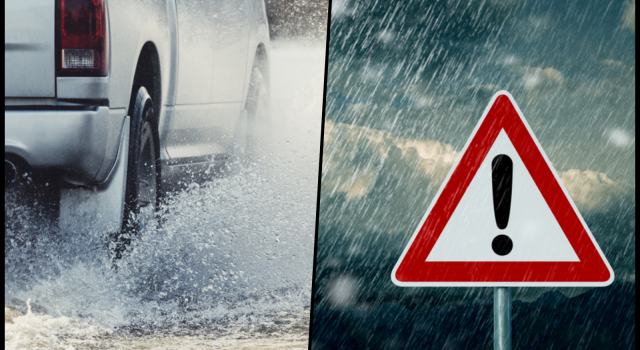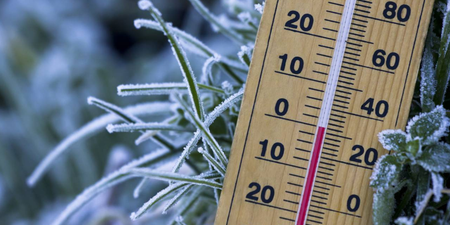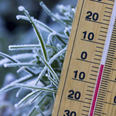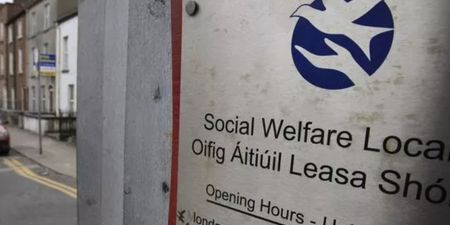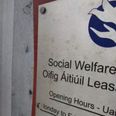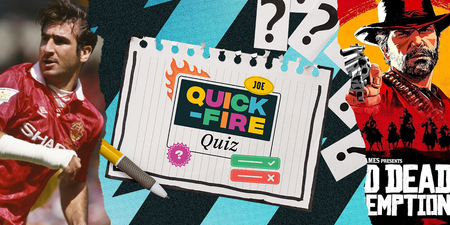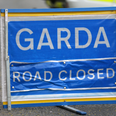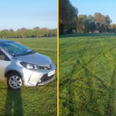Be careful when the heatwave breaks.
What goes up must come down, and all that.
With Ireland currently in the midst of a very warm couple of days – the hottest temperature in Ireland in the 21st century, the joint second-highest temperature ever recorded in the country, and the hottest Dublin has ever been, as things currently stand – you might be begging the heavens for the clouds to open just a little bit.
Don’t fret – rain is on the way. Tuesday will indeed bring more sunshine but Met Éireann has noted that “some showery rain and an isolated thundery burst” is also possible. With that in mind, the Road Safety Authority (RSA) has urged motorists to exercise specific caution on Irish roads throughout the day.
Referring to potential scattered outbreaks of isolated heavy rain showers and thunderstorms in the afternoon in the east and north of the country – the west should be clearer but there still remains the chance of some light showers there – the RSA would like to remind the public of some hazards associated with driving in wet conditions, chiefly:
- It takes longer to stop a vehicle on wet roads, so slow down and allow extra distance between you and the vehicle in front, four seconds at a minimum (use the two-second rule and repeat it twice).
- Take special care when driving behind goods vehicles as they generate a considerable amount of spray which reduces your visibility.
- Allow extra space between you and vulnerable road users such as cyclists, pedestrians, horse and riders and motorcyclists as they may need to avoid area on the road.
- Be aware of the danger of aquaplaning, especially on roads with speed limits of 100 km/h and 120 km/h.
- Check tyres and consider replacing them if the thread depth is below 3mm.
- Use dipped headlights at all times of poor visibility to ensure you are seen by other motorists.
With added risks posed by wet or flooded roads, the RSA offers the following advice:
- If the road ahead is flooded, choose another route. Do not attempt to drive through it. Flooded roads that appear shallow could be deeper than you think.
- After going through water, drive slowly with your foot on the brake pedal for a short distance – this helps to dry the brakes.
- Road users should always follow recommended routes and obey signs closing roads to traffic.
- Watch out for washed out roads, earth slides, broken water or sewer mains, loose or downed electrical wires, and fallen or falling objects.
Pedestrians and cyclists, meanwhile, are advised:
- Walk on a footpath, not in the street. Walk on the right-hand side of the road, facing traffic if there are no footpaths.
- If cyclists need to move out to avoid a flooded area on the road, please signal to oncoming traffic before you do so.
“During a prolonged dry spell, a build-up of oil and rubber deposit develops on the road,” notes an RSA spokesperson. “When the weather breaks, this deposit mixes with rainwater and the road becomes hazardous. The resulting greasy road surface increases stopping distances and the risk of a skid.
“Drivers and motorcycle riders can get caught out with this change in road conditions so the advice is to slow down and increase braking distance.”
🌡️ Phoenix Park today 🌡️
▶️Recorded its highest ever temperature – 33.0°C
▶️12.8°C above its long-term average
▶️The 2nd highest temp on record for IrelandRead all about the temperature records broken in July & Met Éireann's new Climate Services Division https://t.co/lTUJldCSR5 pic.twitter.com/fxASZf8kkD
— Met Éireann (@MetEireann) July 18, 2022
LISTEN: You Must Be Jokin’ with Aideen McQueen – Faith healers, Coolock craic and Gigging as Gaeilge
